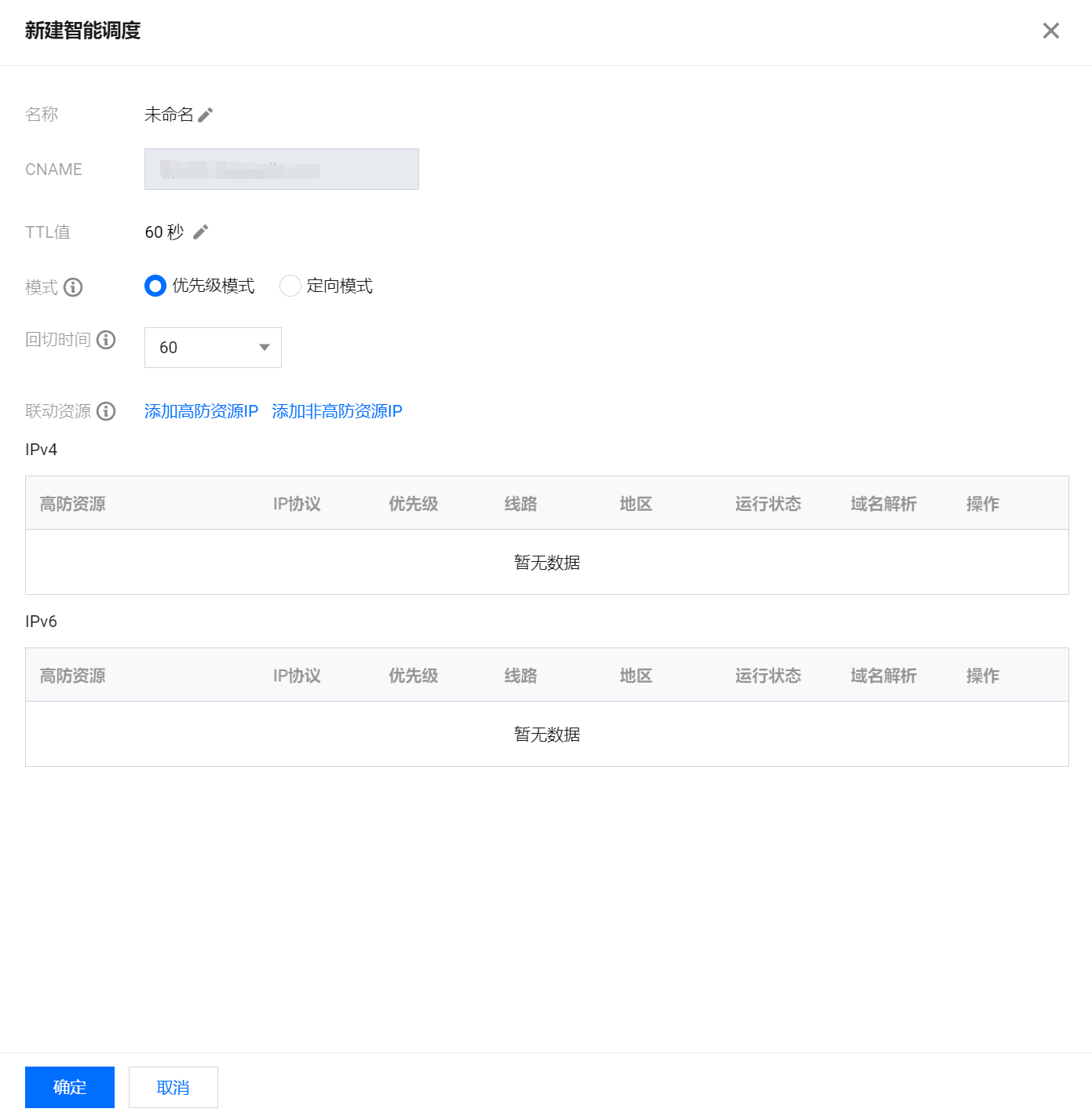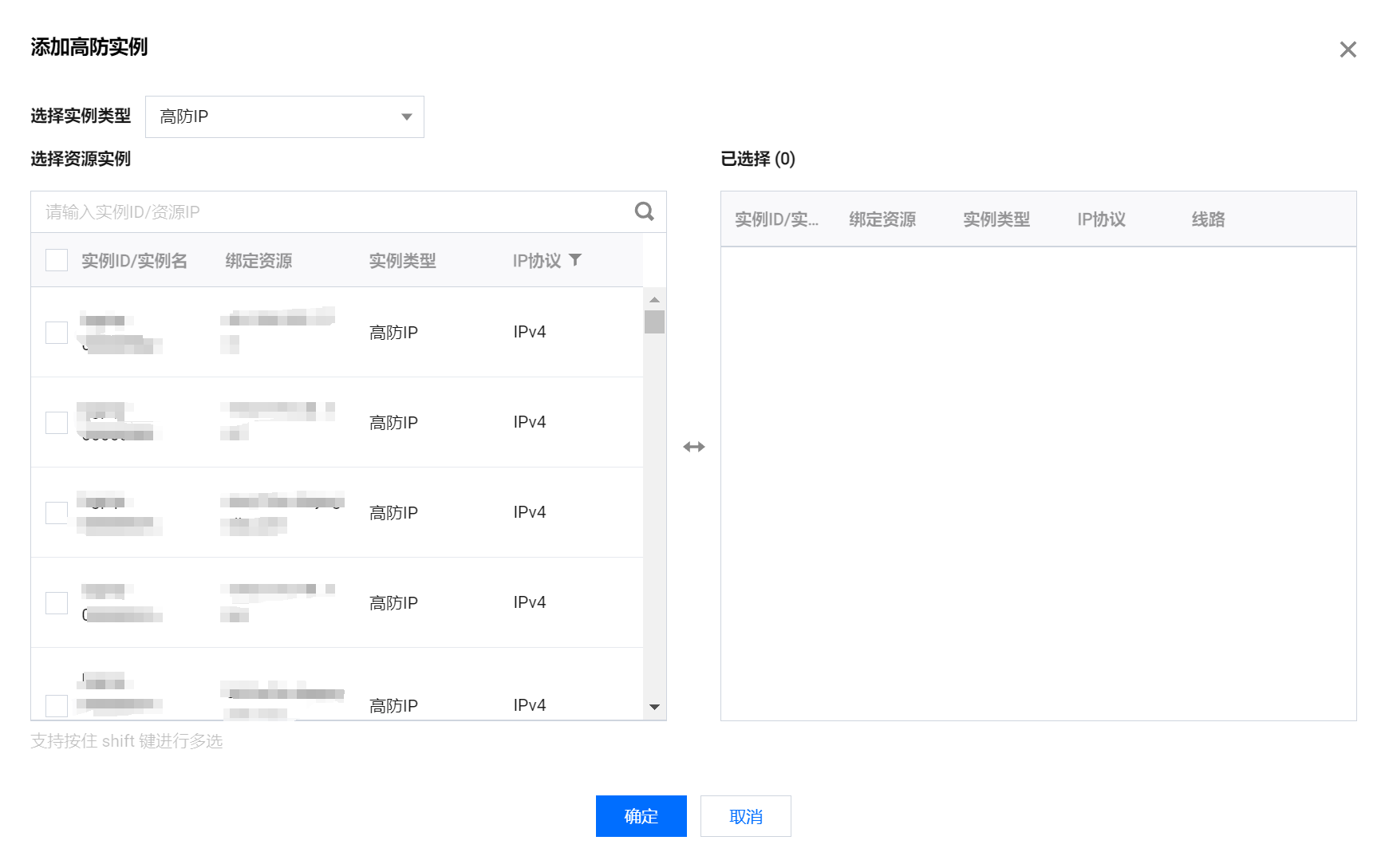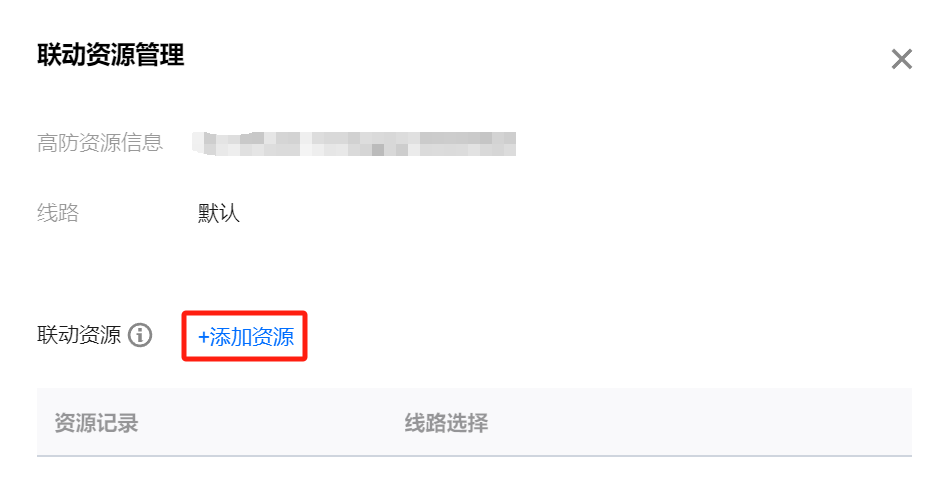智能调度
最后更新时间:2024-07-01 11:33:59
应用场景
一般每个账号下可能拥有多个高防实例,且每个高防实例至少拥有一条高防线路,因此每个账号下可能会存在多条高防线路。当将业务添加至高防实例进行防护后,表示您已经为该业务配置一条高防线路作为防护线路。若您的业务配置存在多条高防线路作为防护线路,您需要考虑该业务流量的最佳调度方式,即如何将业务流量调度到最优的高防线路进行防护,保证业务访问速度和高可用性。
目前 DDoS 防护服务提供优先级方式的 CNAME 智能调度功能,您可以根据实际需要,勾选高防实例并设置高防线路的优先级。
说明:
支持设置解析的高防实例有 DDoS 高防包、DDoS 高防 IP ,其中 DDoS 高防 IP 包括 BGP 高防 IP、电信高防 IP、联通高防 IP 和移动高防 IP。
如果只有一条高防线路时不需要智能调度。
优先级调度方式
指针对所有的 DNS 请求均以优先级最高的高防线路进行响应,即所有访问流量被调度至当前优先级最高的高防线路。您可以编辑高防线路的优先级,默认优先级为100,优先级的值越小,则表示该高防线路优先级越高。具体调度规则如下:
如果业务配置的高防实例包含多条不同高防线路,且优先级相同时,则按照 DNS 请求的运营商来源进行响应。当其中某条高防线路遭遇封堵后,将按 BGP > 电信 > 联通 > 移动 > 境外(包括中国香港、中国台湾)的线路顺序进行调度。
如果同一优先级的高防线路均遭遇封堵后,访问流量将自动调度到当前可用的优先级次高的高防线路。
注意:
若当前无次高优先级的高防线路可用,则无法进行自动调度,业务访问将会中断。
如果业务配置的高防实例,包含多条相同高防线路,且优先级相同时,则按负载均衡方式进行调度,将访问流量平均分发至这些相同运营商的高防线路上进行处理。
示例
假设您拥有高防实例:BGP 高防 IP 1.1.1.1和1.1.1.2、电信高防 IP 2.2.2.2、联通高防 IP 3.3.3.3,其中1.1.1.1、2.2.2.2和3.3.3.3的优先级都为1,1.1.1.2的优先级为2。正常情况下,所有流量被调度至当前优先级为1的一组高防线路进行分发处理,因此来自联通的流量调度到3.3.3.3进行处理,来自电信的流量调度到 2.2.2.2进行处理,来自其他运营商的流量调度到1.1.1.1进行处理。当1.1.1.1进入封堵时,该 IP 下的访问流量将自动调度到2.2.2.2进行处理,当1.1.1.1和3.3.3.3都被封堵时,则原本调度至1.1.1.1和3.3.3.3的访问流量,都将分发至2.2.2.2进行处理,当该组高防线路全部进入封堵时,流量将被调度至1.1.1.2进行处理。
前提条件
在开启智能调度前,请将需要防护的业务接入高防实例进行防护。
说明:
若您需要将防护的云上产品 IP 添加至已购买的高防包实例,请参见 DDoS 高防包 快速入门。
在修改 DNS 解析前,您需要成功购买域名解析产品,例如腾讯云的 DNS 解析 DNSPod。
设置路线优先级
请参考以下步骤,按照设想的调度方案为您的高防实例设置优先级:
1. 登录 DDoS 防护(新版)控制台,在左侧导航栏中,单击智能调度。
2. 在智能调度页面,单击新建调度,系统自动生成一个 CNAME 记录。

3. 在新建智能调度页面,TTL 值默认60秒,取值范围为1(秒)- 3600(秒),调度模式默认优先级。回切时间,当多个资源发生联动时,触发回切流程的等待时间。考虑封堵解除等待时间以及避免频繁触发联动切换,最短时间为10分钟。默认推荐设置为60分钟。

4. 在新建智能调度页面,分为优先级模式和定向模式,不同模式操作如下所示:
4.1 优先级模式:以优先级的方式设置(通过数值的方式),提供资源之间的调度。
4.1.1 单击添加高防资源 IP,勾选需要设置智能调度的高防实例及 IP,单击确定。

4.1.2 选择高防 IP 实例后,实例的高防线路默认开启域名解析,再为其设置优先级。

4.2 定向模式:通过定向模式,指定资源间的调度关系。
4.2.1 单击添加高防资源 IP,勾选需要设置智能调度的高防实例及 IP,并选择需要的线路,单击确定。

4.2.2 在新建智能调度页面,看到选择调度的资源,单击配置联动资源。

4.2.3 在联动资源管理页,单击添加资源,输入联动 IP,并选择自相应线路,单击确认,即可配置指定资源间的调度关系。

示例
例如,您想要将业务流量先调度到 BGP 高防线路,当 BGP 高防线路被攻击遭到封堵后,将流量自动调度到电信高防线路。如果电信高防线路也被封堵,则将流量调度到联通高防线路。当 BGP 高防线路的封堵解除后,流量将自动恢复调度至 BGP 高防线路。
优先级设置方式:您可以将防护业务的高防实例中属于 BGP 高防线路的优先级设置成1、电信高防线路的优先级设置成2、联通高防 IP 线路的优先级不变,即可满足上述调度方案。

如果您暂时不希望联通高防 IP 线路加入流量调度机制,单击

修改 DNS 解析
使用 CNAME 智能调度前,建议您将业务域名 DNS 的 CNAME 记录,修改为 DDoS 防护智能调度系统自动生成的 CNAME,使所有用户访问业务网站的流量都牵引至高防系统。
文档反馈

